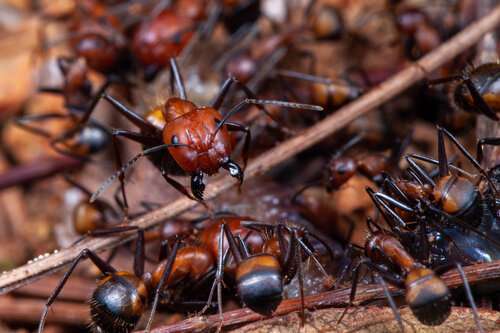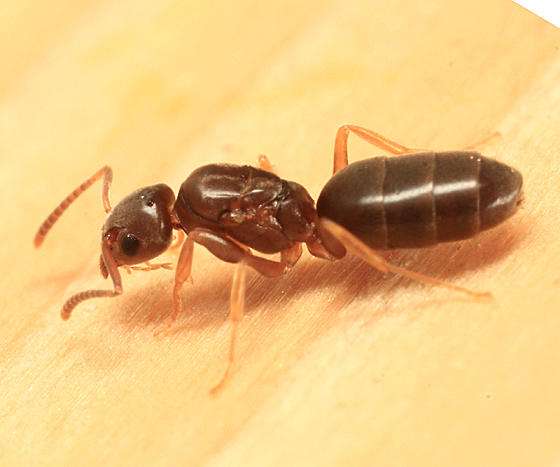
A Camponotus nicobarensis is a Formicidae species described by Mayr Hadton in 1865. A member of the formicid family and the genus Camponotus is Camponotus nicobarensis.
Habitat
Camponotus nicobarensis normally inhabits underground nests dug in the moist forest soil, however they frequently occupy prefabricated structures. Like other Camponotus, they can also survive in wood, but only when it’s moist.
Appearance and Distribution
Southeast Asia is home to the ant species Camponotus nicobarensis, which is recognized by its stylish appearance and black and yellow striped coloring.
Care

Carpenter, a species of Asia Ant
Temperatures: Nest: 24–28°C Outside: 21–35°C
Nest 50–70% relative humidity worldwide 30- 50%
No hibernation
Food: Water (at all times). carbs such as sugar water, honey water, or other. Freshly killed insects or other sources of protein.
Monogyne, a colony form. Multiple queen colonies have, however, been successfully raised by certain people. 10,000 workers on average per colony.
Claustral, the Founding Queen (without feeding)
Acrylic, 3D-printed, natural setting nest type.
Queen: 15 to 16 mm; Workers; Majors: 6 to 12 mm
No to bite, sting, or formic acid
Description
Due to their habit of building their nests in wood, Camponotus nicobarensis is also referred to as the carpenter ant. They are a rapidly expanding species that is very well-liked by ant keepers. Although primarily nocturnal and active, they will consume large amounts of protein. They have a special ability to tap their feet to warn other ants nearby when there is danger. This action can be heard with our own ears and is quite fascinating to observe.
Table





